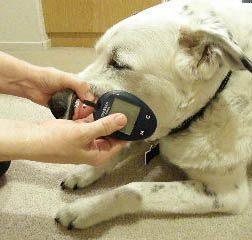Diabetes and pet food
Diabetes in dogs has increased over 300% over the last 30 years. We can only speculate why this has increased, but I suspect a relation to dry kibble which has also increased in popularity over the last three decades.
Approximately 1 dog in every 500 will suffer from this illness, most notably in middle-aged and senior dogs. In some cases even younger dogs have been diagnosed.
Diabetes can cause death, with symptoms including malnutrition, dehydration, weakness in the legs, cataracts, vomiting, lethargy, and labored breathing (ketoacidosis).
Many dogs diagnosed with diabetes are overweight, a tell-tale sign of a poor diet from a food with high filler content (cheap grains, grain by-products, and unnecessary ingredients to bulk up the food). We find many commercial brands guilty of bulking up food with cheap ingredients, which you’ll see in most of our reviews.
I’ve compiled a list of common pet food ingredients that can cause diabetes, and I recommend you compare this with the food you’re feeding your beloved pets.
The list is in order of commonility as ingredients in popular brands of pet food:
- Brewer’s rice (found in 31% of pet foods) – A waste product from breweries.
- Ground rice (found in 17% of pet foods) – Always indicated white rice, can contain floor sweepings.
- Rice flour (found in 11% of pet foods) – A cheap filler, can also cause bowel distress.
- Rice or whole rice (found in 8% of pet foods) – Note: only with non-descriptive rice, which suggests the poorest quality is used.
- Beets and beet pulp (found in 4% of pet foods) – Sugar-filler fibre source.
- Sugar (found in 3% of pet foods).
- Rice gluten (found in 3% of pet foods) – A poor protein source and cheap filler.
- Corn syrup (found in 2% of pet foods) – A form of sugar that can also cause weigh gain, hyperactivity, and ill health.
- Molasses (found in 1% of pet foods).
Changing their diet now may work wonders for their health in years to come.


